Detailed Guide to Machine Embroidery Fonts
In this article, we will share a detailed guide to machine embroidery fonts. So, without wasting time, let’s begin!
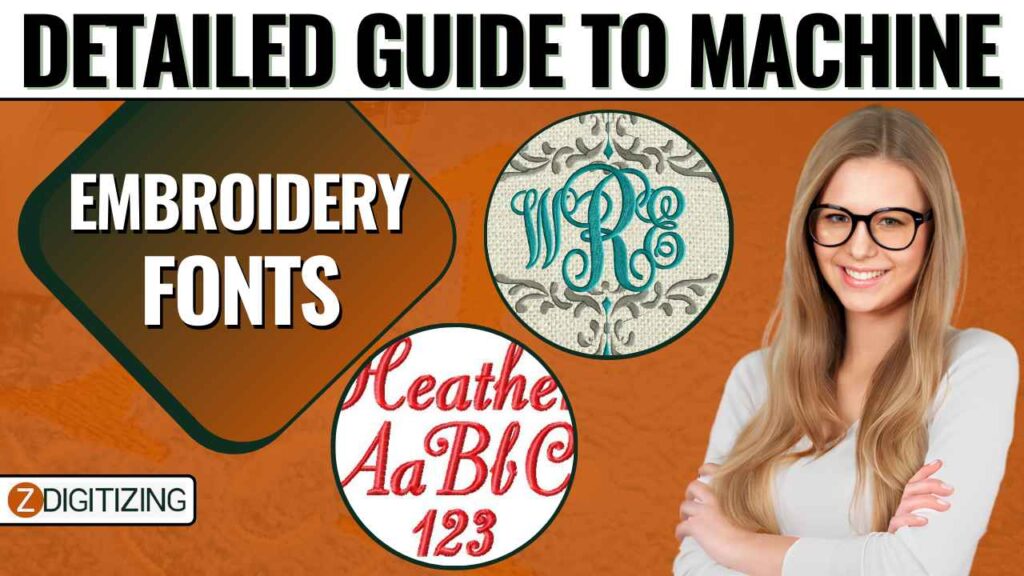
Detailed Guide to Machine Embroidery Fonts
Introduction:
There are a lot of different kinds of Machine Embroidery Fonts available such as ESA, BX, Truetype, stitch file fonts, and a lot more. Due to a lot of embroidery fonts, it is often puzzling to understand why and when to use these fonts.
That is why we are here to assist you, through this article, we will explain what each of those fonts is, what are the advantages and disadvantages of using them, and how to get clean, crisp embroidery lettering whenever you want. But before that let us discuss why embroidery fonts are important.
Embroidery Digitizing
&
Vector Art Services
Are you looking for embroidery digitizing and vector art services at low cost with superfast turnaround, guaranteed quality and preview before pay? So, you are at right place. We can digitize and vectorize any type of artwork in your required file format.
Why Machine Embroidery Fonts Are Important?

ZD being one of the leading digitizing companies started almost a decade back. Since then, our major goal for all digitizing tasks was to accomplish the finest visual appeal from the designs and optimize the design for machine embroidery to make the most of the production.
Now, as far as the visual appeal of the design is concerned, the key is to understand the lettering influence in the design, which is even more important as compared to the actual embroidery design. This is particularly true for logo digitizing, where the most complex logo design could even look slack without the right lettering.
Not to overlook, back in the day, we did not have the multiple choices that we have now, which was beneficial; despite being a limiting aspect. Though, the core here is to know that not every Machine Embroidery Fonts sample is made equal and that you have to choose the right fonts for the right design to accomplish the most amazing final product. To understand better why some fonts bring in a more aesthetic look than others, let us get into some details of different fonts.
1. Stitch File Fonts:
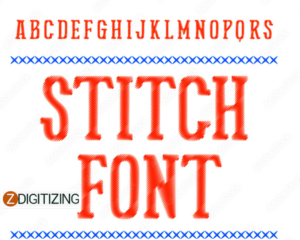
The first kind of fonts we will discuss is stitch file fonts. These are single-letter embroidery designs. These letters/fonts are digitized and converted to embroidery machine formats such as PES, JEF, XXX, etc, which we could consider being ‘keyboard fonts’ that you will type out using your keyboard.
Stitch file fonts are digitized at a selected size, which recommends that they would run finest at the dimensions they were made. Until you are an experienced embroidery digitizer, another editing is generally not suggested for these files either as they are finished embroidery designs.
However a variety of these fonts are often appealing, the crucial downside of using stitch file fonts is that they are not keyboard-based. When using the font to write a text, the letters have to be inputted individually into an embroidery software program and organized manually. This is often an extremely boring procedure and a massive thought about why embroidery lettering is never completed in this way anymore.
2. Monogram Fonts:
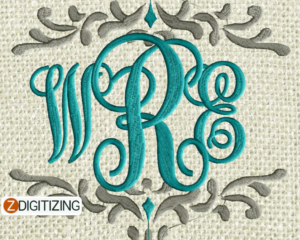
Monograms are letters that are approximately mixed and stitched. They often reflect somebody’s initials and are amazing for personalizing a gift or decorating your clothing.
Most embroidery font types such as stitch types, BX, converted true type, and ESA, are often inserted within a monogram border embroidery design. This is often one of the only ways to make a monogram.
Although to make a monogram pop, it is optimal when letters are specially adjusted in look or size even if or not they are placed within the center, right or left side of the monogram. This requires every letter to be digitized three for middle, right, and left placement.
3. Converted Truetype Embroidery Fonts:
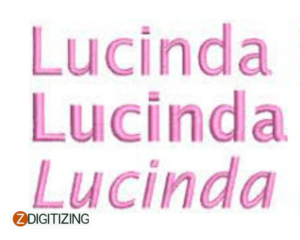
These fonts are installed in your embroidery software. They convert automatically to embroidery digitizing designs when you use them. It is pretty like the embroidery software auto-digitizing lettering files you choose.
The initial problem that pops up is that letters might not path logically for embroidery. An instance would be the letter ‘t’. Generally, when manually digitizing the letter ‘t’ you’d path it an equal way you’d write it: the vertical stroke first then the horizontal one. When embroidery software programs convert Truetype fonts automatically, they do not take the under consideration, and it ends up looking kind of like a telegraph pole. Generally speaking, with Truetype fonts, the standard of lettering relies on the shapes used. Often more thin serif kinds of fonts would provide you the best outcome as compared to the block fonts.
In most cases, these fonts were not made with the intent of getting used for digitizing designs. A lot of fonts are unfriendly in the original form as widths or keystrokes do not consider the principles of stitches.
4. BX Embroidery Fonts:
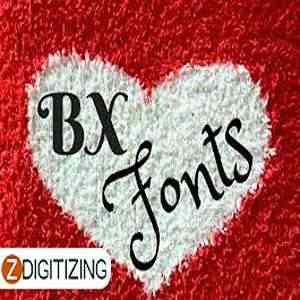
BX embroidery fonts give digitizers to make stitch file fonts or finished embroidery designs and allot a keystroke to each letter so that they are easy types out within a proprietary software program. To give credit where it is due, the innovation of BX embroidery fonts was a reliable idea.
A lot of embroidery digitizers have utilized this service, and to be honest, the initial issue with this kind of embroidery font, does not matter their exposure, anybody could make and sell a BX font, which has flooded the market with badly digitized and auto-digitized BX embroidery fonts.
To be honest, a lot of digitizers do amazing work and have converted their fonts to BX, but at the same level, the number of mediocre digitizers who have made BX embroidery fonts far outnumber the best ones. The reality is, no matter who has digitized them, BX embroidery fonts are all just stitched files or finished embroidery designs that are allotted a keystroke.
5. Embroidery Software Programs And Machine Fonts:
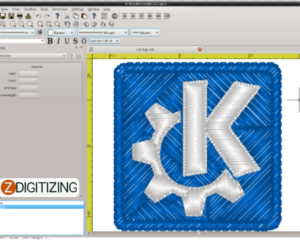
The best option is to use the fonts included in numerous software programs or made within the embroidery machine. They usually stitch out nicely but work best within the embroidery software and machine developers’ recommended sizes. Also, making layouts that include designs and text makes it far more attractive and a less time-consuming procedure.
Conclusion:
There are a lot of different kinds of Machine Embroidery Fonts. Usually, until you are working on a software brand that would run ESA fonts, the fonts that come pre-loaded in your software or machine would provide you the finest outcome over purchasing extra fonts to feature in your software particularly if these extra fonts are Truetype or BX fonts.
Why Choose ZD For Digitizing Services?
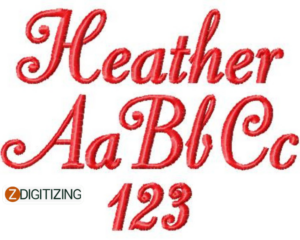
There are a lot of embroidery business benefits, however, embroidery digitizing is a complex process to perfect, needing much guidance and exposure. Zdigitizing is a digitizing embroidery company that provides complete digitizing services all over the world to businesses, industries, and corporations. Zdigitizing provides high-class, durable, and reasonable digitizing embroidery services. We have been delivering top-notch digitizing embroidery services for 20+ years.
Zdigitizing’s digitizing embroidery services are made to give cost-effective and high-quality digitizing services to all businesses, despite order quantity. We offer 50% off on all our services to our potential customers on their first order. So, get a free quote now and we will get in touch with you.
If you think this article was helpful, share it with others you think might be helpful for them as well.












